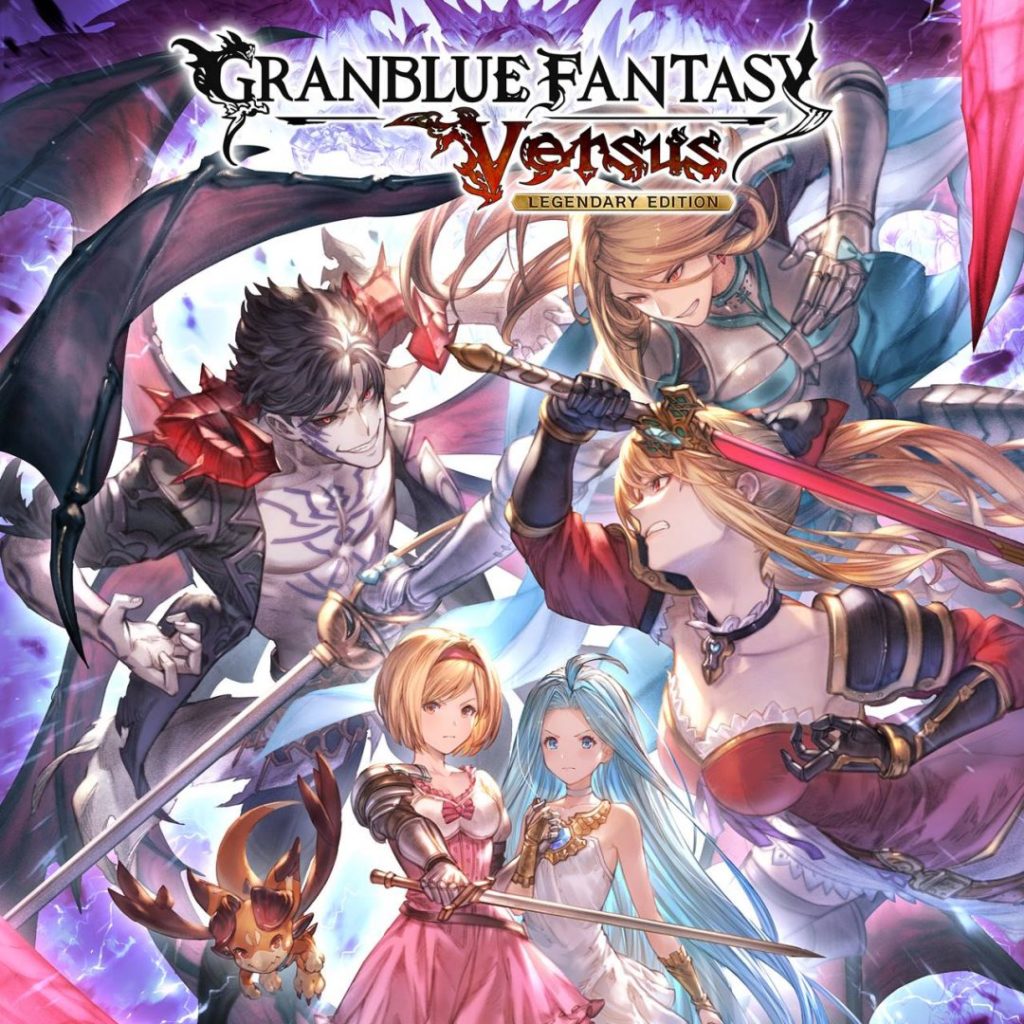
To commemorate the release of the new Legendary Edition of Granblue Fantasy Versus, Automaton Media sat down for an interview with Fukuhara Tetsuya (creative director, referred to as “FKHR” below) and Sekine Kazuto (battle designer, referred to as “Pachi” below) to discuss the history of the game and its road ahead!
(original interview available at Automaton Media’s website. All translation errors are vibratingsheep’s)
On March 3rd, Cygames released the Legendary Edition of Granblue Fantasy Versus (GBVS), which bundles all 13 DLC characters with the original game. For the release of the game, Automaton Media had a chance to sit down with the Granblue Fantasy creative director FKHR and the GBVS battle designer, Sekine Kazuto. We invited Debagame, a GBVS player and the champion of Rage GBVS 2021 Summer, to provide a player’s perspective along with the developers. With our reporter at the table, the 4 of us spent 2 hours chatting, and the conversation is recorded below.
Automaton: Thank you for sitting down with us today. Could you start this interview off by introducing yourselves?
FKHR: My name is Tetsuya Fukuhara, from Cygames. I am the director for the Granblue Fantasy series, and I also wear the Creative Director hat for GBVS.
Pachi: I’m Sekine Kazuto, the lead planner at Arc System Works (ASW) for GBVS. I’m in charge of the battle system, and used to be a writer at a game magazine.
Debagame: I’m Debagame, and I’ve been playing GBVS since it came out! I took home the trophy at Rage GBVS 2021 Summer. I’ll be asking a lot of questions on behalf of the players!
The Origins of GBVS
Automaton: GBVS is a Cygames project developed by ASW, but we hear that some of the GBF staff worked on the game as well. How did that change the structure of the development team and the makeup of the staff?
FKHR: On the Cygames side, the entire art team and some members of the writing team took part in developing the game. On the operations side, our localization team, media planners, and esports division were involved as well. The game was overseen by the art team’s lead, the writing team’s lead, and myself. The three of us worked on GBF, GBVS, and Granblue Fantasy: Relink simultaneously, and the same goes for a large number of the localization team.
Automaton: So Cygames was in charge of the art and the text. Was ASW left in charge of all of the fighting game elements?
FKHR: Yes. I made little requests here and there, but the game systems and numbers were ASW’s responsibility.
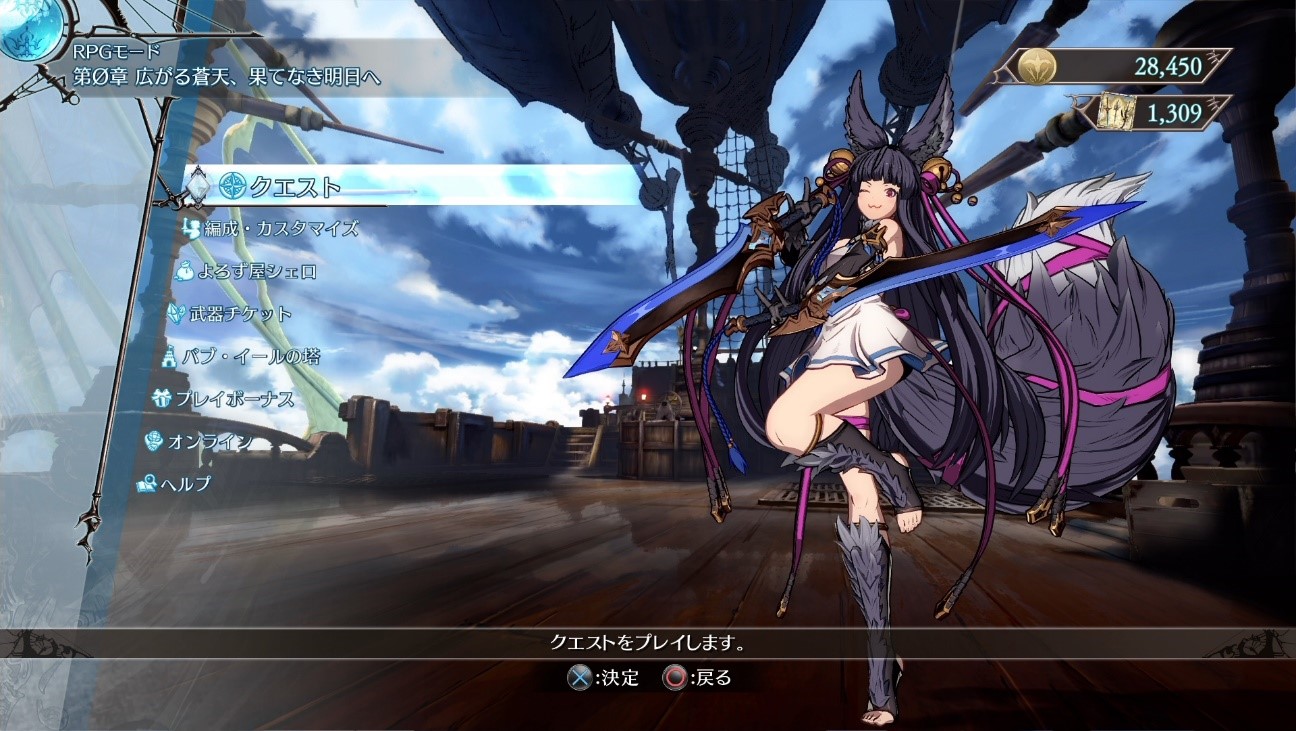
Automaton: Could you tell us again about how GBVS came into existence?
FKHR: I get asked this a lot, and it’s hard to pinpoint a single answer. Cygames has a vision of lifting up the whole game industry, and one focus of that vision is on the esports scene. One aspect of that esports focus involves Shadowverse, but I think the shining jewel of esports is fighting games. So we thought we would add a fighting game to our repertoire, with our flagship franchise Granblue Fantasy. It would join with Shadowverse to bring the hype as esports.
Automaton: It’s been two years since the game was released, were there any moments during the game’s development that were especially memorable?
FKHR: If you include the development time before the game’s release, it’s been a 5-year road.
Pachi: Yeah, things were very tough right after release but I think we’ve been able to work on this game without any huge delays.
FKHR: Thanks to the diligent work of the ASW team, all of our DLC has come out on schedule too.
Pachi: Because of the coronavirus pandemic and other issues, we missed a chance at EVO (Evolution Championship Series), which is a shame. On the other hand, we’ve been able to run tournaments online as well as events without spectators, and we get good turnout for those. That’s been nice.
On the development side, GBVS releases characters at a faster pace than most ASW games, so I remember a lot of tight deadlines on the DLC. These last two years after release have zipped by in the blink of an eye.
FKHR: Because the coronavirus pandemic hit so soon after release, we were never able to hold a release party for the Cygames and ASW teams. That’s bugged me for two years.
Pachi: Yeah, I hope we can celebrate some day. As a personal note, I’ve played GBF pretty diligently for a while. When the project came to us in 2016, I said “Well, this is a good reason to play GBF” and installed the game. I remember getting Lucio from my Beginner’s Draw Set, and based on everyone else’s advice my first Surprise Ticket went to Yodarha.
I started playing GBF with the intent of making sure I took good care of someone else’s baby, but once I started playing I got hooked (laughs). At first I just muddled about with the goal of getting more SSR characters, I mashed the casino hard to get Christina… I remember a lot of those early days.
FKHR: In our pre-development meetings, you kept telling me how you were doing in Unite and Fight.
Pachi: I couldn’t exactly tell other people about how much GBF I was playing before the game was announced, so I wanted to tell someone (laughs). I had a few vacation days that lined up well, so I played hard with the intent of making it to Unite and Fight Hero (top 2,000 in the individual points rankings). I didn’t just play Unite and Fight of course, I read the stories and conversations from front to back and back to front with the intent of learning each character’s skills and what made them popular. For example, Cagliostro’s Super Skybound Art where she turns the opponent into a gold statue: the idea came from the thought that if Cagliostro’s body is her concept of the ideal form, what if she turned her opponent into that ideal form too…? We wouldn’t have been able to think of that without playing the game, so that was time well spent.
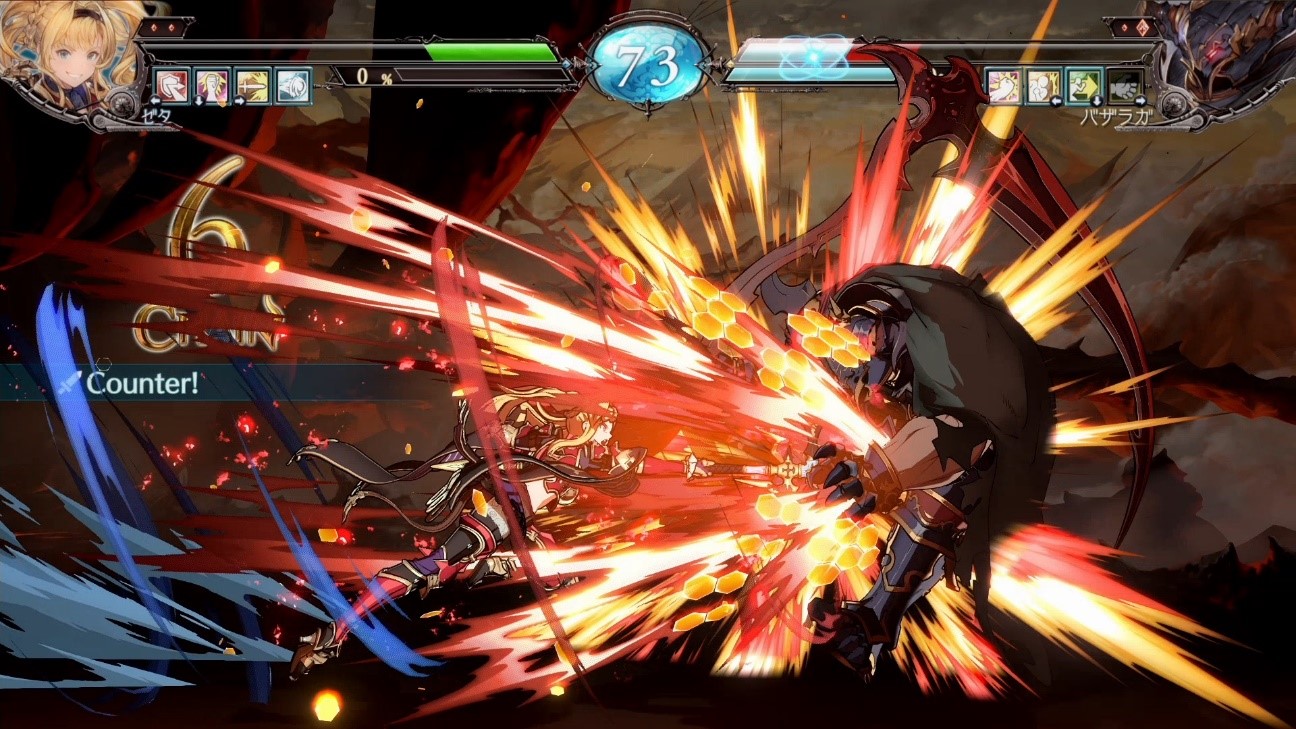
FKHR: Whenever the ASW team came to us with an idea, they would bring a lot of material from the game with very detailed proposals. I don’t remember the GBF team having any complaints, because the ASW team always did their homework.
The biggest request I made of the team was “I want videos of the moves in the command list”. I thought that there would be a lot of players from the main GBF game who came from phone games, so instead of making you succeed at inputting the command before seeing what the move was, we wanted the player to see a video of the ability in action.
Pachi: It was amazing to hear so many suggestions from Cygames on the usability side. They offered ideas from the perspective of “We want it this way for players who aren’t used to fighting games.” For the characters, Cygames gave us a general overview, and told us that the fine details could be found in the characters’ stories. It was very easy to work with. Hmm… our graphics team lead said “The characters who are supposed to be pretty are put under way more scrutiny than the others” (laughs)
FKHR: We had a lot of suggestions when it came to the art and design. The yellow color of the effects when a character used an Ability+ came from the original GBF. It started out as a green effect. The health bars have more animation than usual, and that was my request. I loved the health bars in Guilty Gear XX and thought they were really cool, so I wanted ours to look like that. I had a lot of suggestions for the fine details like that.
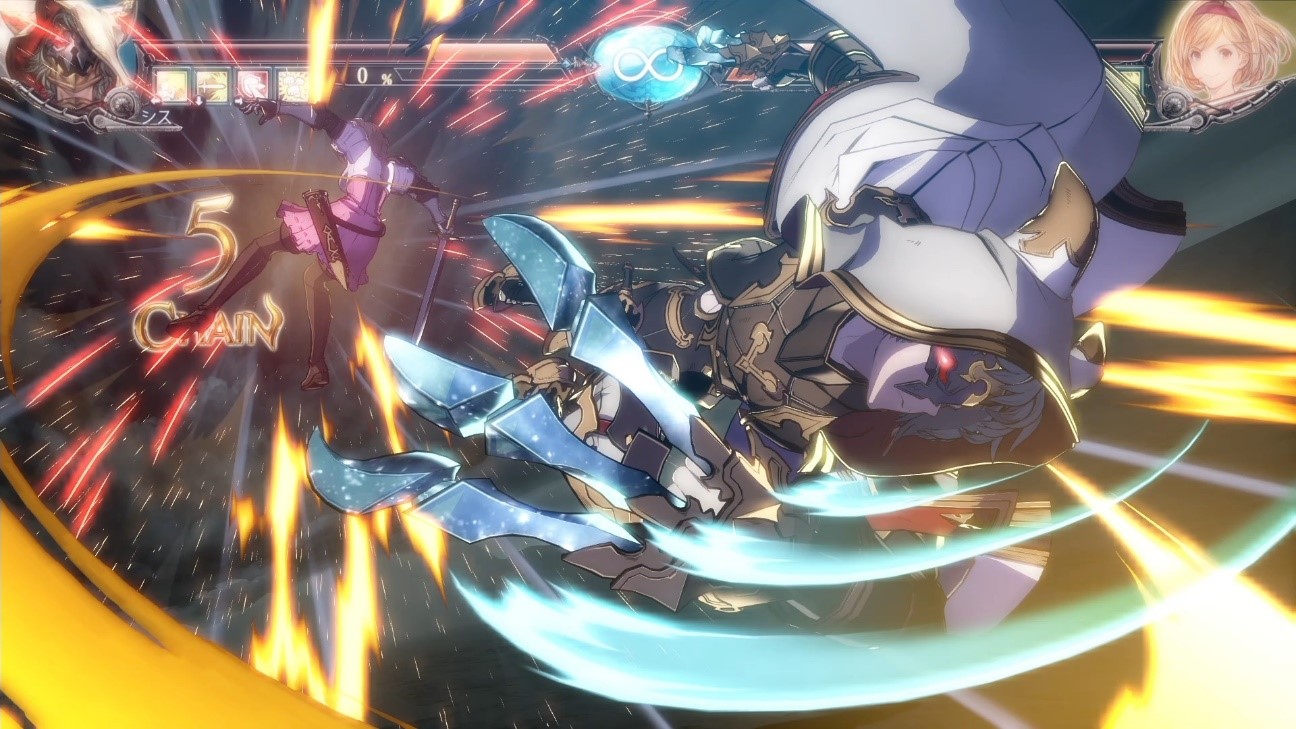
The Developers’ Roots in Fighting Games
Automaton: Thanks for the stories! The questions from Automaton editorial end here, so from now on we’ll have Debagame ask questions from the player perspective.
Debagame: Thank you so much. So, for my first question: what parts of GBVS were unique from a development perspective? And what vision did you have for it as a fighting game?
FKHR: Because of the GBF material, we anticipated a large number of mobile players coming to the game. We also thought there would be a group who used to play console games up to the PS2, but have mostly played mobile games in the past decade or so. We wanted to make sure that those players could come to the PS4 and enjoy the game, so we wanted to make sure that the system wasn’t too complex.
On the esports side, there are plenty of people who do not play much and enjoy spectating. We targeted that group as well, so we made sure that if you didn’t have too much knowledge of the game systems, you could still understand what was happening on the screen. Having a better idea of how the fight is going makes it easier to cheer for your side, and when we brought these ideas to ASW they said “That’s great, we were just about to tackle this challenge ourselves.” It made for a very smooth process.
Pachi: At first, we asked ourselves “No air dashes or double jumps in an ASW game? Is that allowed?!” (laughs). But we’re confident that we can make many different styles of fighting game at ASW, and this opportunity to take a back to basics approach to fighting games came at a great time for us.
Debagame: I see, so that’s why you made a simpler system with no universal air dashes or double jumps – you wanted to make a game that players who were just coming back to fighting games could jump into and play.
Pachi: I don’t think that air dashes and double jumps make a game hard to learn, but it’s so ingrained in the concept of “A fighting game made by Arc System Works.” The more freedom of air movement you have, the more different kinds of air combos you can do. There are a lot of series that let you do that, and a lot of titles that don’t, like Battle Fantasia. GBVS was a good opportunity to make a game outside of the ASW box.
Debagame: I think I get it. I’m a big fan of the Blazblue series myself. I’ve played it since release, and I still play it today. What about you two, what was the first fighting game you played and the first one you really got into?
FKHR: For me, it was Street Fighter II on the Super Famicom. I first saw it in Comic Bonbon and thought it looked fun, and when I was in grade school my friends and I would get together at a friend’s house and play it. After that I went to the Fatal Fury series and The King of Fighters, and got totally addicted to Guilty Gear X on the Dreamcast. I played Guilty Gear XX at the arcades starting with the very first location tests… and after I entered the working world, I played Blazblue Calamity Trigger starting not long after release
Debagame: You mentioned an arcade, and now I want to know which arcade it was.
FKHR: I spent most of my time at the Sendai station arcade. It’s long since closed, but I went to Plid’s a lot (translator’s note: Plid’s in Sendai closed in 2005)
Debagame: Oh, nice! I went to Sendai and stopped by once.
Pachi: My first fighting game was… well, I don’t know if you can truly call it a fighting game, but it was Kinnikuman Muscle Tag Match on the Famicom. In that game, any character who caught a light ball from Meat-kun could use a unique special move. I think it may have been one of the first games with character-specific special moves, and all 8 of the playable characters had different stats on their punches, kicks, movement speed, and special ability properties. As “a versus game with significant differences in character abilities”, it may be one of the first prototypes for the modern fighting game – at least, that’s how I think of it. As for what we now consider fighting games, I also started with SFII. After that, I played a lot of Psychic Force and Street Fighter Alpha 2, but I really want to emphasize that Muscle Tag Match was my first fighting game.
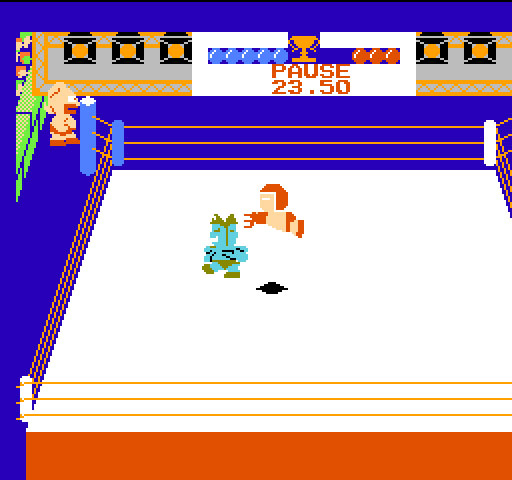
Debagame: Now I want to check out Muscle Tag Match for myself…
Pachi: When I was a kid, people thought that Brocken Jr. was the strongest character, but I always thought of him as the second worst in the game. A lot of people will gladly pick Brocken Jr. if you tell them to, but I would always pick Warsman and kill them in one touch. It was one of the first games I took seriously enough to master, so I think it’s a good game (laughs)
Debagame: Is there any one game that had a big influence on the vision and development of GBVS?
FKHR: We wanted to make a game like Street Fighter II or Street Fighter IV, where a person could come back to the game after a long time and still remember the controls.
Pachi: That’s right. There was once a big discussion about what fighting game you could come back to after a long time and play the best, and that’s definitely SFII. If I wanted to, I could go back to that game right now and still play fairly well. Of course, I have a lot of muscle memory for ASW fighting games, but when it comes time to play certain series I think there are a lot of times where you say “I’m pretty out of practice” and avoid it. So, we wanted to make a game like SFII where you could return after a long time out of the game and not hesitate at all. We wanted GBVS to be a game where everything came back to you quickly. I’m glad we managed to make a game that kept the depth and difficulty for those who play the game hard, while lowering the barrier of entry for controls and making it a game that’s easy to come back to.
Debagame: I see a lot of people who come back after a while and can still land their combos. When they come back they remember how fun the game is, so I think you succeeded on that count.
Pachi: Cygames really hammered it home that they wanted to make a title that would be supported for a long time, so we didn’t want to make a game that was impossible to come back to without hours and hours of practice. We could have made a game that was much more difficult, but it can be hard to make a game like that that is both well balanced and enjoyable in the long term. So, we focused on making this game simple enough that it would be easy to come back to while also adding elements that still took practice to master: hit confirms with a limited move set, precision of anti-airs, and more.
FKHR: This isn’t just limited to games, but the world of entertainment is extremely saturated these days. Competition is fierce, and and there aren’t too many reasons to pick one game and stay with it for an extremely long time. The modern way to make a game that lasts a long time doesn’t require the player to come back every day and stick deep – enjoyment of a game lasts much longer when a player can pick their spots and play a bit at a time. Our goal with GBVS was to give many players the opportunity to come back with major updates and DLC.
The Game’s Reception
Debagame: Do you two have a main, or a favorite character? Mine is Vaseraga, of course.
FKHR: I’m a Vaseraga fan too.
Debagame: You love to hear it.
FKHR: I’ve always been a fan of the big bodies. I always play the big characters with more limited movement. Some can’t run or dash, some can’t jump… Vaseraga can do both, though.
Pachi: This might be a boring answer, but I like them all. In my position, if I say that I like any one character, then people won’t trust me and say “That’s why you’re always biased toward them when you patch, isn’t it!” (laughs)
(translator’s note: this is exactly what happened in Guilty Gear Xrd with Pachi’s history as a Faust player in Guilty Gear XX. Thanks for the good times, Pachi!)
To be more precise, each character has moments that I like. Cagliostro’s Super Skybound Art I mentioned earlier is one of them, and so is Ladiva’s Super Skybound Art. For Vaseraga, it feels so good when you go from a crouching anti-air into huge chunks of damage. For Gran, I love how the kick in Overdrive Surge takes on a life of its own. On top of that, I feel like all the characters we’re currently working on are my favorites – Narmaya was my favorite character when we were making her, for example.
Debagame: I get it.
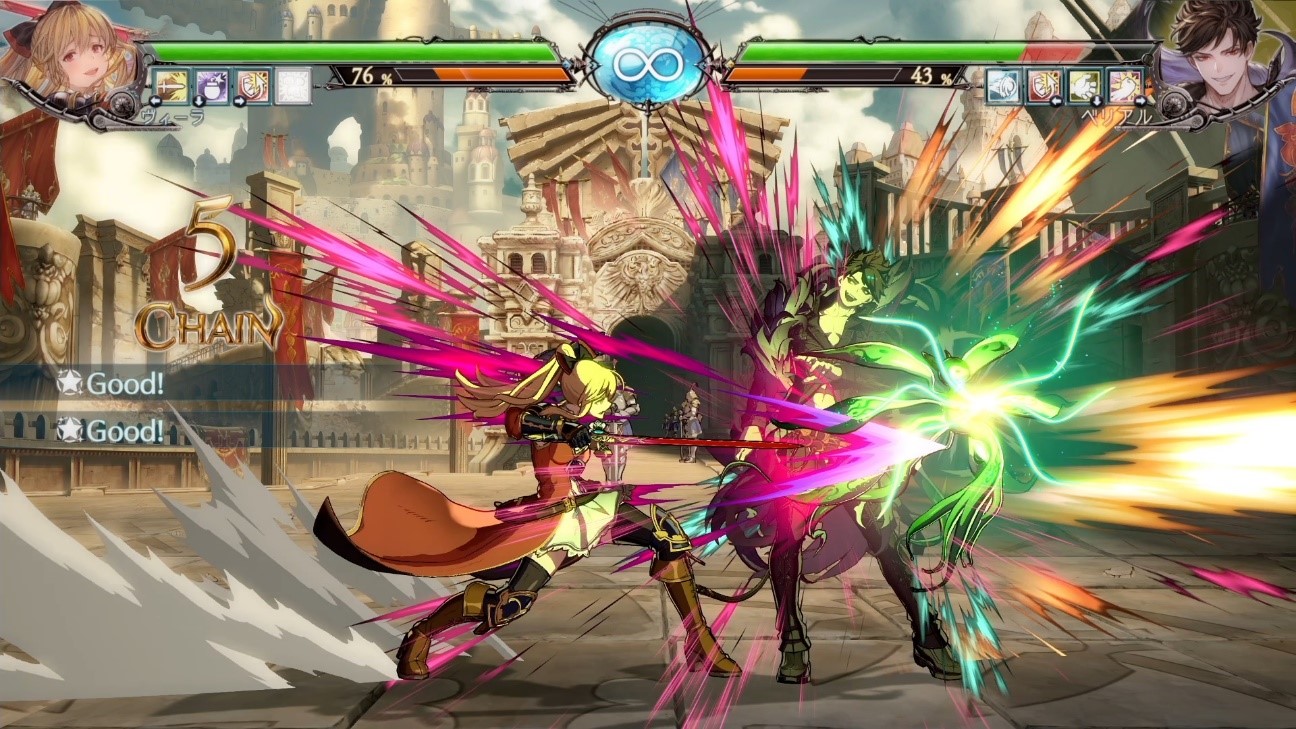
Automaton: We’re curious, how do you feel about GBVS from the perspective of a fighting game player, Debagame? Could you look back at your years of playing this game and tell us?
Debagame: I’ll start with why I played GBVS in the first place. Like I said before, I started out as a BlazBlue player. I left that game and didn’t play any fighting games for about 3 years, and then I heard that ASW was going to make a series based on the well-known IP Granblue Fantasy.
A lot of my friends were the same as me, old fighting game players who hadn’t really played in a while, and they started talking to each other saying “It’s been a while, let’s try this one out.” That’s how I got the idea to play it myself. When I started playing myself, I was surprised by how many new players there were, and a lot of famous players from other fighting game series were there too. I was pretty moved by it, thinking “fighting games can still be this hype…” I’ve seen a lot of people on social media who started with this game and got interested in other fighting games like the Guilty Gear series because of it. I feel like GBVS had a pretty big impact on the fighting game community.
Season 1 had a lot of really powerful characters. My Vaseraga was pretty strong, but compared to the top tier he couldn’t quite keep up. When season 2 came around, I felt like the unique parts of each character were preserved while the gap between character tiers shrank, so the game was really good. In season 1, almost everyone could land some huge damage combos that would end the round instantly, the kind of game balance that felt great but was also nerve-wracking. If I had to characterize the current game, I’d say that the giant damage combos have become fewer and further between, and the game has become more stable. For the best players, winning and losing is based more on practice and experience.
FKHR: We didn’t aim to draw players from other games and gather them in the same game – I’d call that a happy accident. I think the fighting game community always tends to flock to the newest game, and GBVS released at a time when there weren’t many other new fighting games. So GBVS had fortunate timing on that count, attracting the attention of different communities of fighting game players.
Debagame: As for tournaments, having RAGE and the Cygames Cup events spaced so well kept me and a lot of other players motivated. Do you two have any favorite moments from those events?
FKHR: I remember during Rage GBVS 2021 Summer, you and Shio-san were laughing and smiling during your match. That’s the kind of communication and conversation you can only have in a fighting game, and that’s when I thought “I’m so glad we held this tournament.”
Debagame: I think I remember that. I’m pretty sure that was when my Vaseraga had almost no health left, and Shio-san’s Lowain summoned Yggdrasil. I thought “There’s no way I’m pulling this out now!” (laughs)
The Philosophy of Winning and Losing
FKHR: When you lose to some stranger online, you get really frustrated, but I think back in the old days playing against friends offline, you didn’t get nearly as mad. That scene made me remember those good times.
Debagame: Playing online definitely amplifies the pain of losing compared to playing offline.
Pachi: Sometimes, I wonder to myself if the ranked matchmaking system that’s standard in every fighting game is actually necessary. I think it’s a lot like the social media effect, where seeing someone who’s happier than you makes you unhappier. The constant comparison of yourself to other players in the ranked system is both joyful and stressful. It’s not something we can come up with easy solutions to, but I think it’s an important issue to tackle.
Debagame: Hearing that reminds me, back in season 1 during ranked matches online you couldn’t see the stars under your Master ranking, just a pure number ranking. I don’t remember when you started showing Master stars, but is that change related to what you’re talking about?
Pachi: At first, all we showed was your ranking on the ladder, but the biggest reason we changed it was because the old system made it very hard to tell when you were doing well or showing any change. People asked us to change it to show the number of stars you had earned.
This isn’t directly related to the topic, but more players than we expected would make it to Master rank and then stop playing ranked. Personally, I don’t think Master is the end goal, I like being matched up against other Master rank players. I think it’s healthy for Masters to play against each other, but on the other hand, ranked matches between Masters are really brutal and involve a lot of points where you really have to desire the pursuit of perfection. It makes me wonder if I should really want it as much as I do.
We also had requests to allow people to rank down from Master, which we implemented, but we spent a lot of time thinking about it before doing it, because we wanted to weigh it against the pain of playing ranked that I mentioned before.
FKHR: In versus games like this, I always wonder what we can do to help with the most frustrating elements.
Pachi: Anything that’s fun also has its painful parts, but it’s hard to strike the right balance.
FKHR: Fighting games are especially tough because they’re one on one, and one person always comes out on the losing end. Card games are the same way. Compared to that, it feels like battle royales and team vs. team FPS are more popular these days because players can spread out the burden and the blame.
Pachi: If you set your goal as constant improvement, then I don’t think that losing is 100% bad. There is a type of player that enjoys the challenge of ranked matches, too. However, every developer of a versus game has to find a way to provide enjoyment to the type of player who says “ranked is too stressful for me”. It’s always on our minds.
Going back to the original topic of a memorable moment in a GBVS tournament, I love when you can really feel the emotion of the players. That’s why I remember being on the edge of my seat for Jiro (Lowain) vs. Mocchii (Ferry) in Rage GBVS 2020 Winter. The moments when they fought through the pressure and focused, when they made mistakes and recovered from them, that’s when I thought “That match was played from the heart” and I think that’s what fighting games are all about.
On Balance Updates
Debagame: In Version 2.70, all characters were buffed and the players really enjoyed it. However, most of the updates before these were nerfs and 2.70 was a reversal in direction. Could you tell us how you got to that point?
FKHR: Version 2.70 of GBVS is a pretty critical juncture in the game, because we knew there would be a long wait until the next update. We wanted the players to be able to enjoy themselves until the next patch, so that’s how we started asking each other “Is there anything wrong with buffing everyone?”
Debagame: I have to ask what you take into account when you’re balancing the game. Do you weigh how many players play each character, win rates in ranked, and tournament results?
Pachi: We take a look at the big picture. We ask if the character has personality and fits their style, tournament matches, fight replays, all of that. However we do not consider the results of each tournament. If we weighted tournament results, then our changes would only affect the top level of players. We want a large portion of the player base to benefit from the changes. We do take character usage and win rates in online play into account, but we don’t make it a goal to have every character played in equal amounts.
This is a topic that Harada (Katsuhiro)-san of Tekken has talked about on YouTube before, so I highly recommend watching his video. There’s also a big difference between what people perceive as a character’s win rate compared to that character’s actual win rate. Our biggest concerns are if the character still adheres to the concept of the character, and if their playstyle brings out the personality of the character.
As another aside, we check win rates from Master rank, from SSS and SS rank, B rank, etc. at weekly and monthly intervals and they’re very different. There are plenty of examples of a character considered weak by the wider community having a higher win rate in Master rank, for example.
On top of that, when you look at the balance changes as a whole, people feel like there were a lot of nerfs overall but from Season 2 on, there have been more buffs than nerfs. However, people always react more to nerfs than to buffs, so I think that no matter how many buffs you put in there, any nerfs will make the strongest impression. So even if as a whole the character gets better, players don’t feel like the character got better unless the character was specifically buffed. We’ve been wracking our brains on how to deal with this problem, because it’s so hard to detail the final results to the players.
We’ve had requests to put more concrete details and intents in our patch notes, but I think if the developer puts too much into those, then that reduces the joy of discovery and figuring out new solutions and possibilities. Trying out the changes and discussing them after long practice and experience is one of the joys of player discussion, and I want to preserve that.
FKHR: We always release the patch notes the day before an update, but we only list basic changes. We avoid listing the exact numbers for everything. We worry a lot about the trend where people look at a list and label a change as “godlike” or “garbage” when we think that conclusions shouldn’t be made until the game is booted up and the change is seen in action. In the days after a patch, we see videos with info like “This is what’s now possible after the buff” and wonder if we should have put that in the patch notes in the first place, but I don’t think that’s the right way to do things. That’s not something you can write out for every change in frame numbers, and we think about that a lot.
Pachi: I mentioned earlier that as a developer, we don’t want to limit the players’ process of discovery or pattern of play, so we always wonder just how much we should write in a patch note. Some people tell us that it’s annoying to look up every change and ask us to write out everything, but I think that being able to process that information is a fighting game skill in and of itself. We’re not hiding things in the patch notes, we’re trusting the players. It’s one way that you can show your mastery of a character and a game.
Watching the Players
Debagame: On my own end, I want to keep promoting and hyping up the game, so I run and stream tournaments. Have the two of you watched?
FKHR: I know about it, and if the schedule lines up then I watch.
Debagame: Wow, really?
FKHR: I watched you train Gold Ship [in Umamusume] and saw your Sakuyama Chocojiro stream, too.
Debagame: Wait, what?
FKHR: I thought those were fun. The other day when I got home from work, I was browsing while in the tub and saw Nakao-san’s weekly tournament. He wore the kigurumi, that was great to see.
Debagame: Do you look at the fanart from players too?
FKHR: I don’t actively look for it, but I see it a lot. Some colors on a character come to represent a certain player, and that’s part of what makes a fighting game so fun.

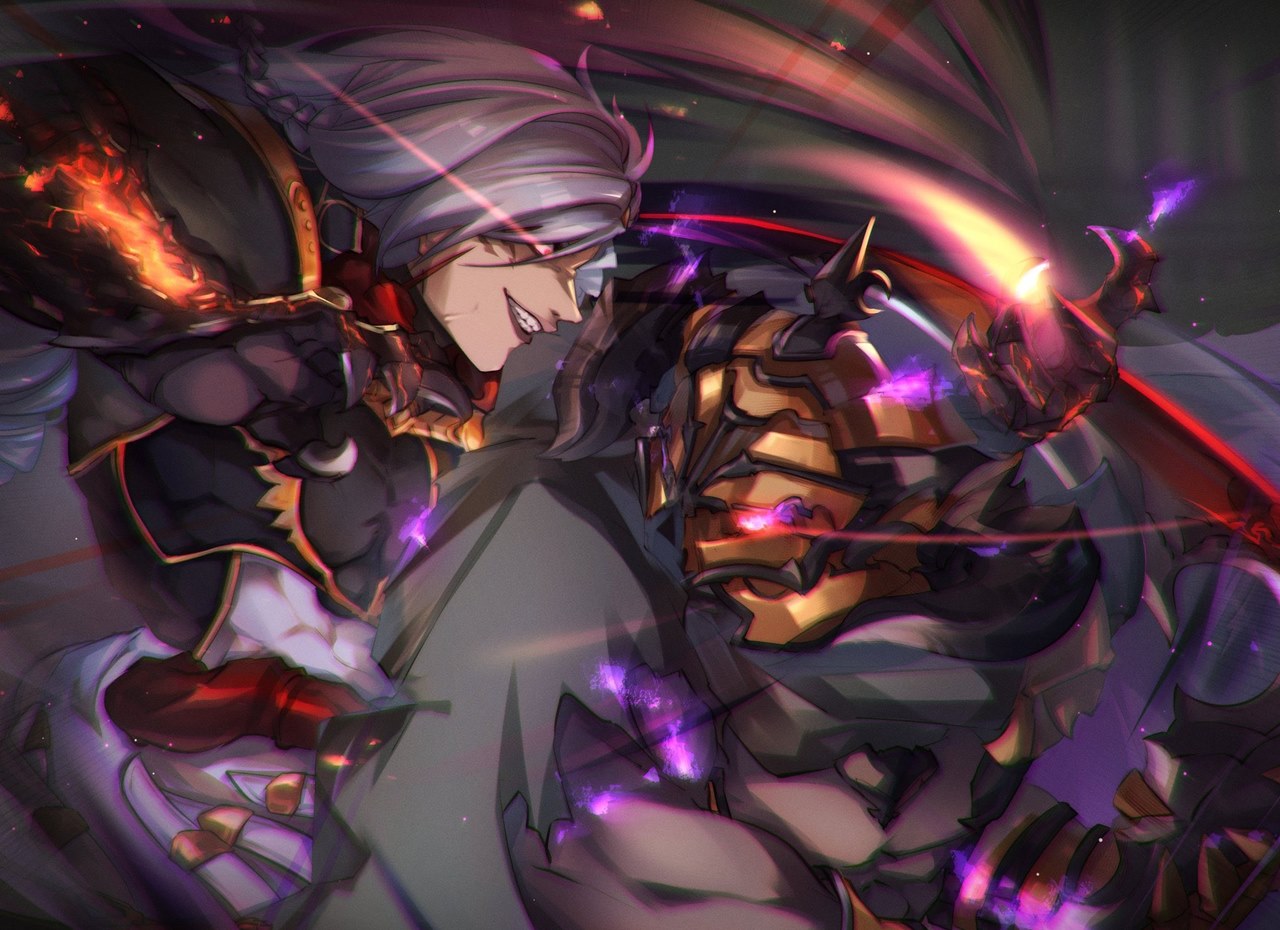
The Future of GBVS
Debagame: You ran a New Character poll recently, do these polls form the basis of which character is coming next?
FKHR: We consider how well-known a character is in GBF, whether their fighting style is unique enough, and what kind of relationships they have with other characters, among other things. When I say character relationships, I mean paired sets like Lancelot and Percival or Zeta and Vaseraga. We also want to keep a gender balance when possible. There are so many characters in GBF, we have a lot of factors we can take into account when we pick the cast.
We do, however, apologize for releasing Anre, Eustace, and Seox all in a row (laughs).
Debagame: I remember my friends saying “Give us a female character!”
FKHR: The release order took the roster’s gender balance into account, because Seox brought us to an even gender split. But we only counted crewmates on that list, and didn’t add the villains Belial and Beelzebub. That made the males outnumber females by two. We always consider villains separately from allies in the mobile game, so we brought that over to GBVS out of sheer habit.
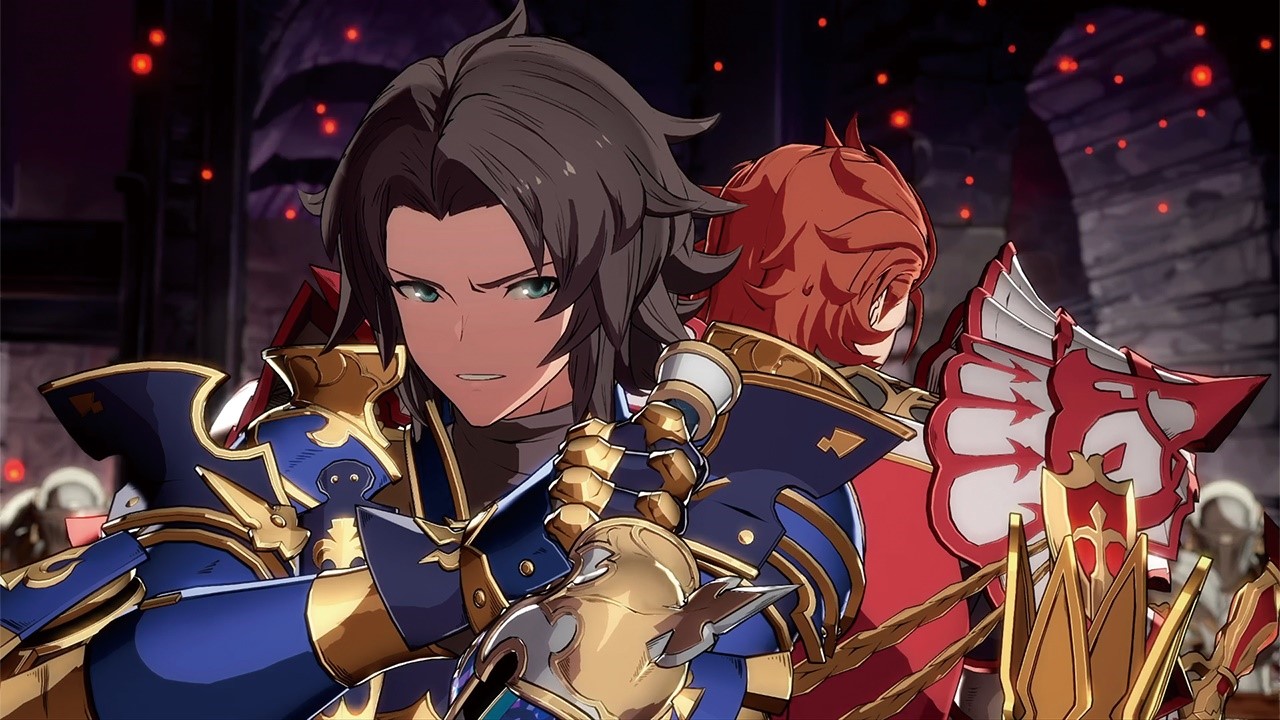
Debagame: The players overseas ask a lot about having their own official tournaments. Are those a possibility?
FKHR: Sponsoring and hosting tournaments is a tricky topic, but we are looking into ways to let players overseas get access to color palettes that were exclusive to Japanese events. We think it would be weird to make them paid DLC or free DLC, but maybe we can make them tournament prizes, or work with community events to give them out.
As for running official tournaments overseas, there are a lot of challenges and we can’t talk about them in detail, but we are definitely looking into ways to help and want to do something.
Pachi: This doesn’t just apply to overseas tournaments, but when you want to hold a tournament, the most important thing that leads to someone saying “I want to see another tournament” is increasing entrant numbers. It’s the easiest metric you can point to.
Casual entrants are the most valuable group for a tournament, and I think the most important thing you can do to continue holding tournaments is to create an environment where casual entrants feel welcome.
Debagame: Following up on the topic of overseas players, we hear a lot of calls from overseas about rollback netcode. Is there any progress on that front?
FKHR: I’ve said this before in English interviews (translator’s note: hey that’s us!) and other places, but in the current environment I feel like it’s better to have it. That said, the barrier to implementing it changes for each title, so just saying “This title implemented it, you can definitely implement it here” isn’t true. It’s a huge undertaking for GBVS, but I do want rollback and we’re discussing how to tackle the problem.
Debagame: Cool. Thanks for letting me ask so many questions!
Automaton: Thank you, Debagame-san. We’d like to ask about the release of the GBVS Legendary Edition next. Could you tell us about what led to the timing of this release and the continued support of GBVS?
FKHR: It wasn’t a very big decision, it was just a good opportunity to release a new package after the end of Season 2. Cygames is putting full support behind this fighting game, and we’re going to keep the hype rolling. GBVS is going to see a lot more support.
Automaton: To close out this interview, could you leave a message to the players of GBVS and people who are looking into buying the game?
FKHR: I said this before, but we plan to continue support for GBVS for a long time. We’ve released a roadmap for 2022, and it may take a while before we get to the next release after that, but I hope you’re excited to hear about what’s next.
On March 3rd, the Legendary Edition as well as a discounted Cygames Greatest Hits version went on sale. Both are priced very reasonably, so I hope you pick it up and invite a friend to join you.
As for tournaments, we’re stepping up our ES tournament support and plan to continue hosting official tournaments, so I hope new players make it a goal to enter a tournament some day. There’s value in just entering a tournament, and the atmosphere around a fighting game can be so great.
Automaton: Thank you.
